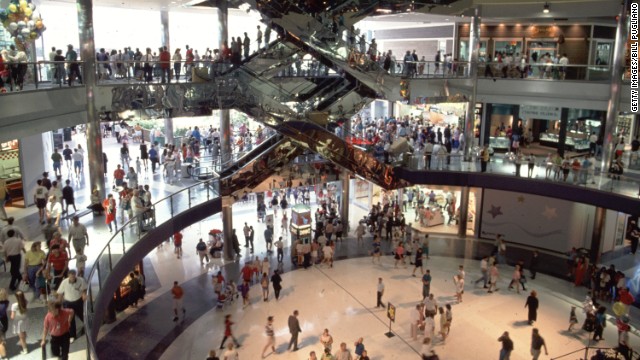
By Doug Stephens
On October 25 of this year — on an otherwise quiet day in retail news — Nike chief executive Mark Parker fired a reverberating shot across the bow of the entire retail industry. He announced that out of Nike’s global universe of more than 30,000 retail partners the brand would, going forward, focus its time, attention and capital on forty — FORTY — retailers that Nike calls “strategic wholesale partners.” Partners, he explained, which are willing and able to build out unique and dedicated Nike spaces within their store environments.
With this one brief announcement, Parker had not only given tens of thousands of merchants around the world a Tony Soprano-style kiss on the cheek, but he’d also made the same sweaty-palmed decision that thousands of other brand CEOs secretly wrestle with on a daily basis: whether to abandon the intoxicating volume of the mass market in a sober effort to save their brands from almost certain ruin.
Barely a quarter goes by that I don’t speak with at least one brand executive awakening to the reality that the reach, ubiquity and market penetration that hyper-retailers, department stores and discounters once offered is now the very thing that is siphoning equity from their precious trademarks. The power-merchants that made these brands household names were now the very things rendering them commoditised hostages in a high-speed chase to the bottom. Once the salvation of many a fledgling brand, mass merchants have increasingly become like kryptonite. In a world constantly seeking what’s next, new or special, mass retail has become toxic in its overexposure. For consumers, to whom shopping experiences matter as much, or more, than products, mass merchants are bringing nothing to the table.
Nike is merely one in a growing list of labels rethinking their distribution strategies. Earlier this year Coach announced it would leave the floors of over 250 department stores. Michael Kors also made a similar decision. And high-end outerwear brand Canada Goose, a brand that has traditionally been sold through wholesalers, now has a long-term goal of generating at least half its profits from its direct-to-consumer business. One by one, brands are fleeing the mass market and their absence will weigh heavily on all mass merchants.
However, more important in Nike’s announcement was the bold declaration that only one tenth of one percent of their retailer network — those retailers who could deliver on the brand promise and experience — were even worthy of the brand’s time and attention. The remainder of Nike’s resources, according to Parker, would be dedicated to growing the brand’s direct-to-consumer business through its owned stores and websites, which currently represent about 30 percent of Nike’s total sales.
In a world constantly seeking what’s next, new or special, mass retail has become toxic in its overexposure.
This is by no means a minor shift. In fact, what it portends is a complete reformation of the retail market and a breakdown of the wholesale-retail model for revenue.
Where today the retail market is largely divided by luxury, mid-tier, and discount, the coming decade will see the market more clearly bifurcate into two distinct retail approaches. The first will encompass an ever-swelling number of vertically-integrated brands that focus on serving individual consumers at scale and in a manner that best befits the brand. The second will be a new class of “experiential merchants” that use their physical stores and online assets to perfect the consumer experience across a category or categories of products. They will define the ideal experiential journey, employing expert “product ambassadors” and technology to deliver customer experiences that are truly unique, remarkable and memorable. So memorable that they leave a lasting, positive experiential imprint on the shopper’s psyche.
The solitary aim of these new-era retailers will be to drive significant sales for their brand partners. But unlike stores of today that are single-mindedly focused on four-wall sales, experiential stores of the future will position themselves as true any-channel hubs. They will serve customers through multiple means of fulfilment that will include their own channels as well as direct-to-consumer sales from their brand partners. Attribution for these sales will matter less than delivering the powerful shopping experience responsible for generating them. And for this, brands like Nike will reward experiential merchants handsomely — not simply with conventional product margin but also with upfront media and agency fees. These experiential merchants will, in essence, be media channels and will be earn revenue as such. Brands like Nike will not be their vendors but rather their clients.
Taken in this context, Nike’s announcement on October 25, 2017 was a profound harbinger of a tectonic shift in the industry. One of the world’s largest brands was not merely communicating a new brand strategy but more clearly than ever before, foreshadowing an entirely new and revolutionary era of retail.

